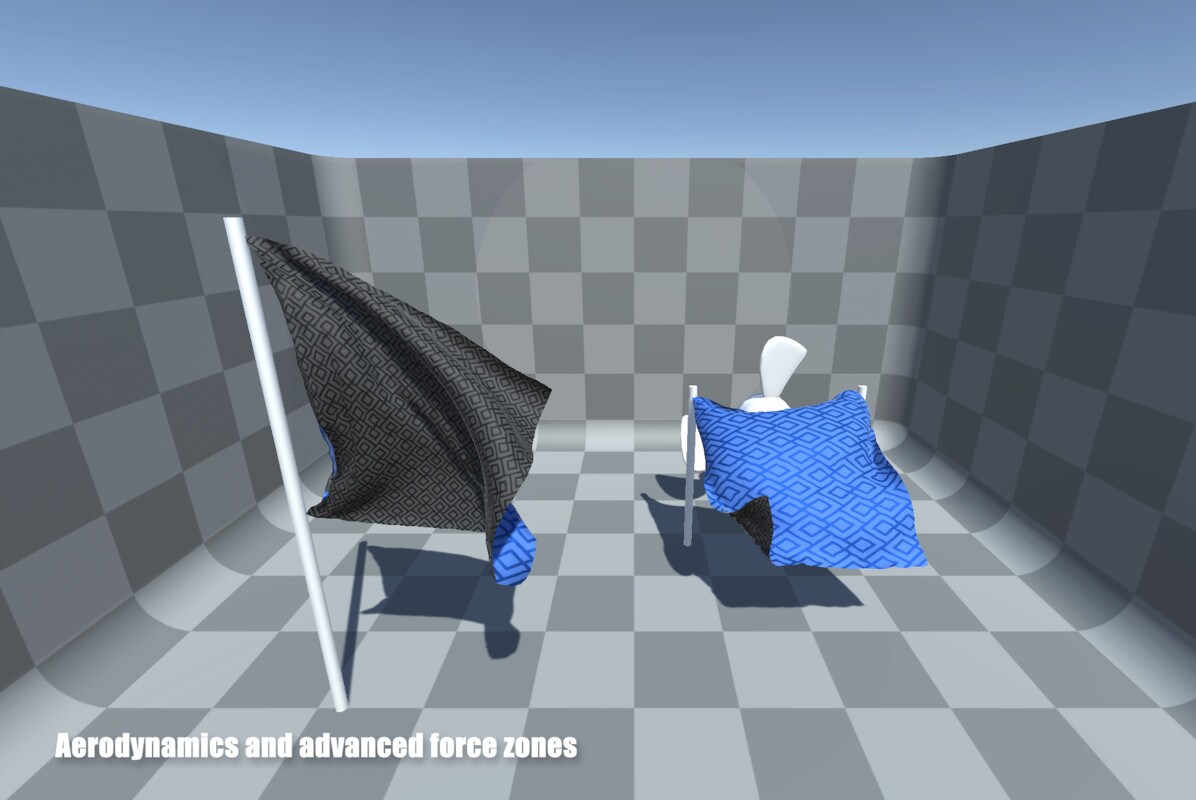| Publisher | Virtual Method |
|---|---|
| File size | 30.86MB |
| Number of files | 1298 |
| Latest version | 7.0.5 |
| Latest release date | 2025-03-13 09:09:15 |
| First release date | 2025-03-13 09:09:15 |
| Supported Unity versions | 2018.4.2 or higher |



























Obi is an advanced particle-based physics engine capable of simulating a wide range of deformable material behaviors, capable of running both in the CPU and the GPU. (CPU mode depends on the Burst, Jobs, Collections, and Mathematics packages, GPU mode requires compute shader support).
The Obi Physics Suite includes ObiRope, ObiCloth, ObiSoftbody and ObiFluid in a single package, and features new sample scenes that make combined use of them.
Links
Features:
- With ObiRope, you can create ropes and rods using a non-linear, non-destructive editing workflow. They can be torn/cut, resized, can have variable thickness/color/mass along their length and can be rendered using multiple methods: shape extrusion, chain made of instanced meshes, lines, or entirely custom meshes.
- With ObiCloth, you can turn any mesh into a cloth that can be affected by wind and other external forces, and blended with skeletal animation to create character clothing. Create flags, nets, ribbons, and other cloth-like objects with ease.
- With ObiSoftbody, you can turn any mesh into a volumetric or surface-only softbody that supports elastic and plastic deformation, and can be driven by skeletal deformation.
- With ObiFluid, you can emit particle-based fluids with variable density, viscosity, surface tension, color, vorticity and viscosity (with buckling and coiling effects supported). The surface of fluids is rendered as a mesh. It can also simulate granular materials such as gravel/pebbles.
All Obi objects (ropes, cloth, softbodies and fluid) can collide against colliders, rigidbodies, other Obi objects and themselves, they can be attached to colliders and other Obi objects.
There's support for SDF (signed distance field) colliders, radial, directional and vortical force zones that can take on any shape.
You can programmatically add/remove/modify constraints, read/write any particle properties, access a list of contacts between particles and objects, perform parallel spatial queries such as raycasts or spherecasts, and much more. Simulation can be performed in either the CPU or the GPU.



















